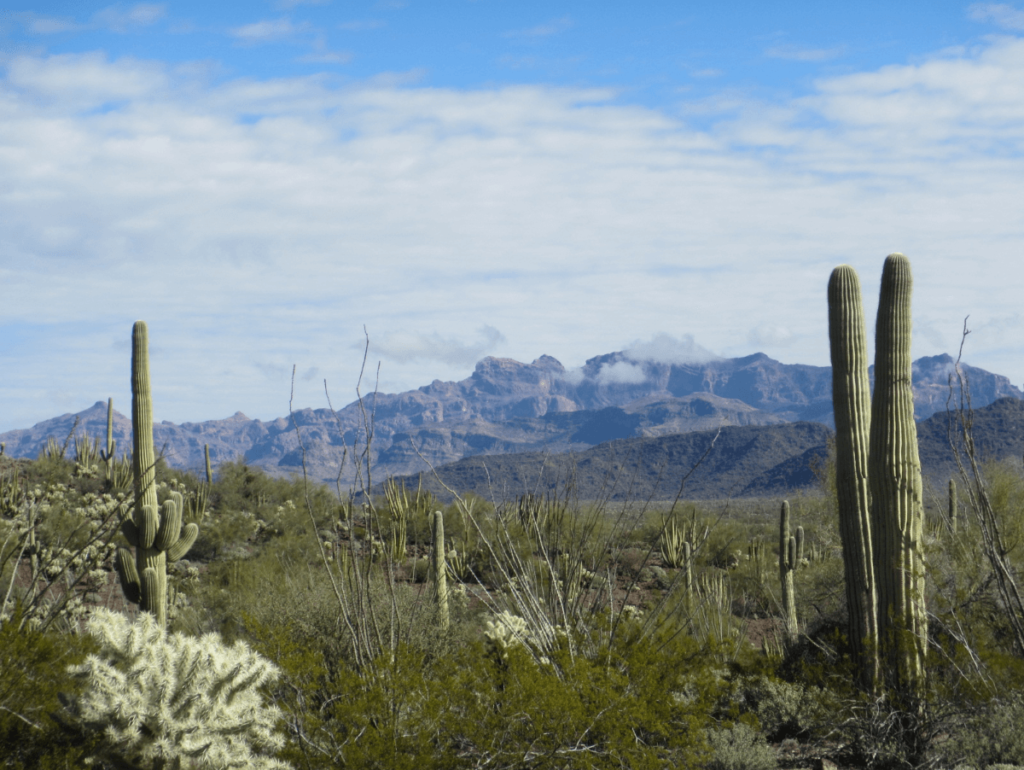What is a National Monument, and why is it different from a National Park? In the United States National parks are created for their scenic, inspirational, education, and recreational value. National monuments have objects of historical, cultural, and/or scientific interest. Additionally, National Parks have a minimum size of 2500 acres whereas there is no minimum size for a National Monument (note: historically smaller areas were allowed for parks, but the current minimum size requirement was introduced in 1971).
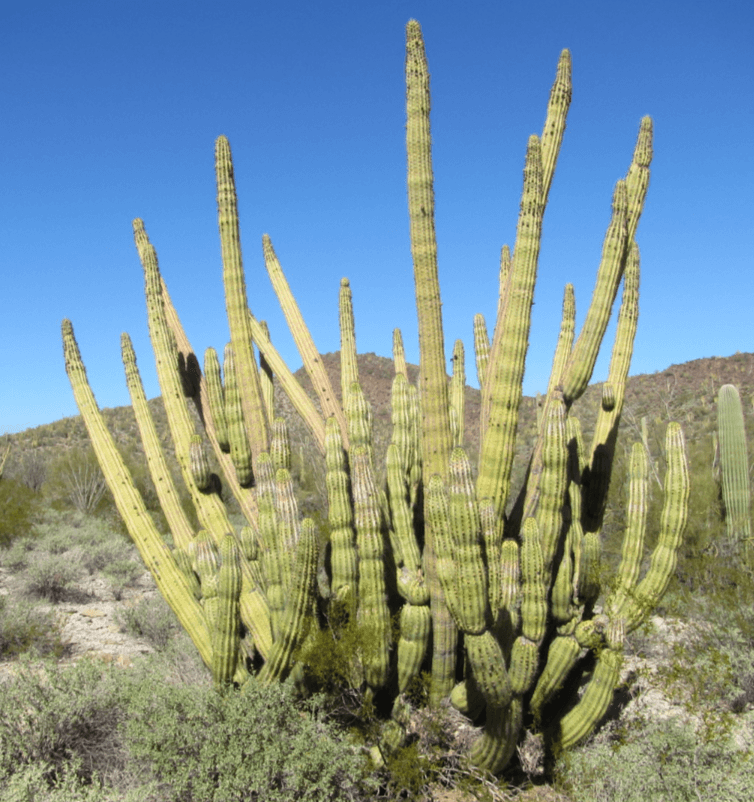
Organ Pipe Cactus National Monument encompasses the majority of the Organ Pipe cacti that are found in the United States.
The camprgound within the national monument (still keep expecting to see a structure of some kind when I think of the word “monument”) is call “Twin Peaks” (nothing to do with the 90’s TV show) and has 208 campsites packed into a very small area. Even though the individual campsites are small they have done a great job with the landscaping, so that you don’t feel that your nextdoor neighbours are watching through your windows.
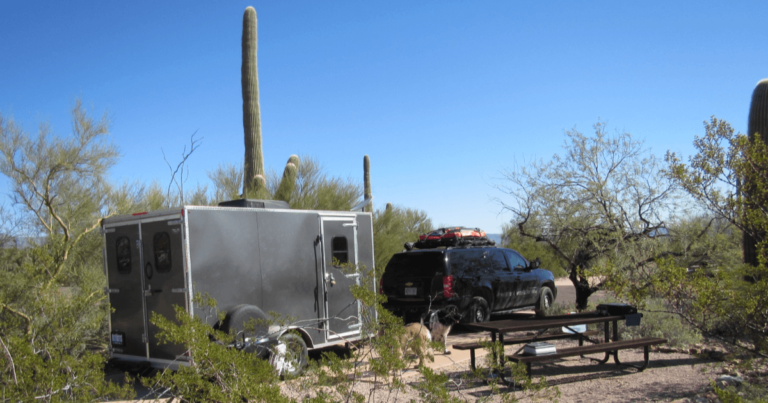
Twin Peaks campground doesn’t have any electrical or water services at the campsites, so we bought a small generator in preparation for our first try at “boondocking” (camping without services). This is really supported boondocking as there are water spigots in various locations around the campground and there are small washrooms. Half of the washrooms contain a single “solar” shower. This means the water is heated by the sun. A sign in the shower cautioned that water temperatures can be scalding. This was not the case for us. My first shower was luke warm, but ok. My second shower was painfully cold, as was Brenda’s first and only shower (an experience she did not want to repeat).
Generators were allowed to be run from 8-11am and 3-6pm. This worked out fine for us as we slept without heat (lots of blankets) and then warmed up Rosita starting at 8am. We used our invertor during the daytime, and then recharged the battery during the evening generator run. We did discover that this type of usage requires a faster battery charger than we currently have as we only have 3 hours to recharge our 105AH battery. Something I will attend to before we do any real boondocking.
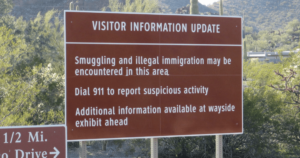
The campground is located about 6 miles from the Mexican border. On the way here we passed US Border Patrol sites, signs saying “Don’t Pick up Hitchhikers”, and then this sign when we got to the park.
There are two hiking trails in the campground area, one that goes around the campground (good for a morning dogwalk), and then a 4-5km trail that goes from the campground to the visitor centre. A nice walk for us and the dogs.
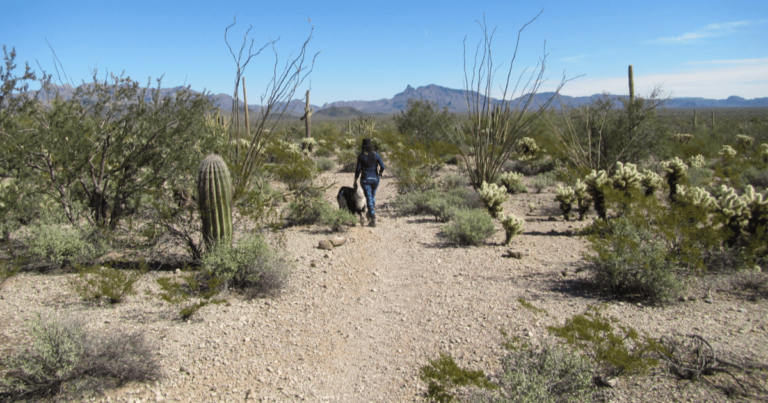
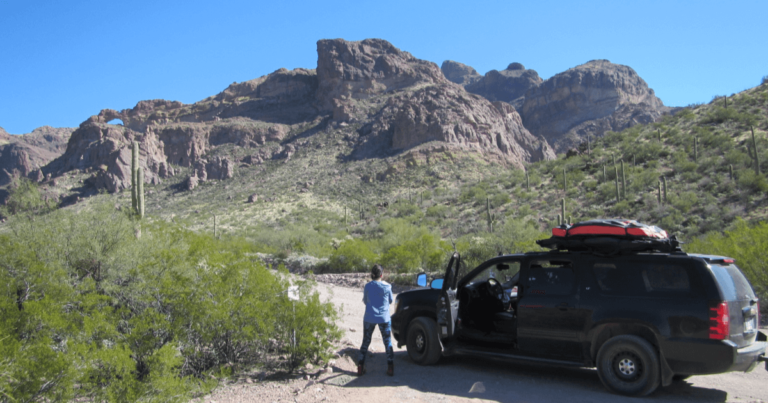
Just across the road from the visitor centre is a 20 mile gravel road that takes you through and around some nearby mountains. A brochure from the visitor centre provides a self-guided tour with stops indicated by signs on the gravel road. This is supposed to be a 2 hour tour (more on this below).
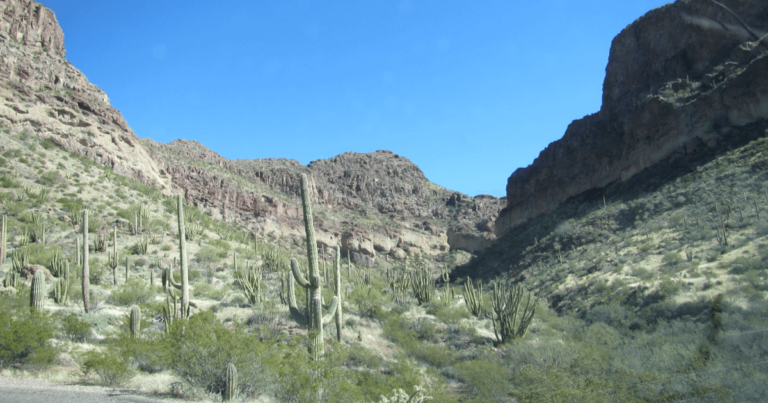
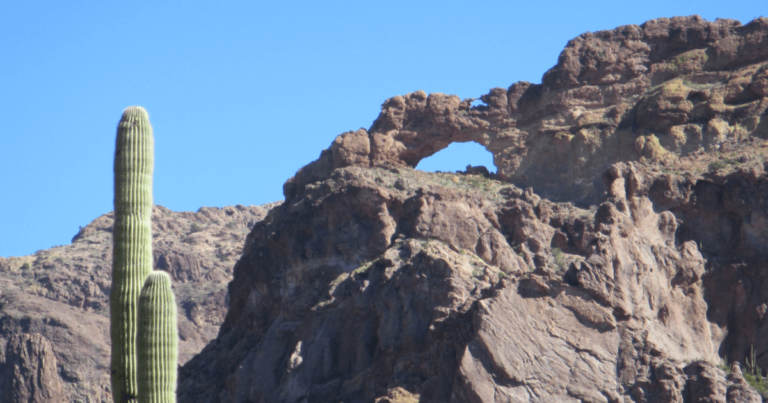
We both noted that there seem to be more Saguaro cacti here than in Saguaro National Park!
We did a very touristy thing, we stopped the car from time to time and took pictures out of the window! Felt a bit weird doing this.
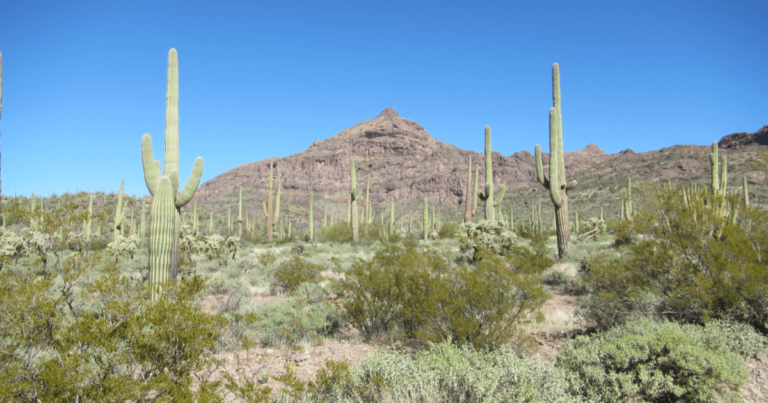
Towards the end of the 20 mile tour I noticed the Suburban was pulling to the right, then Brenda said “do we have a flat tire”. Well, crap… yes we do. We had stopped with the flat tire in a bit of a low spot and it took 2 hydraulic jacks and almost an hour to put the spare tire on. I have never used the spare tire on this particular Suburban (my fourth Suburban) and the spare was located underneath the rear of the chassis. I had to get the truck manual out to see how to get to the spare. When the spare finally emerged from its hiding place it was covered in winter oil underspray (I got the truck sprayed every fall), so Brenda had fun scrapping the goo off. All good though, finally got the flat tire stored up under the chassis, and off we go, driving slowly and trying to miss every sharp stone I could see (which was more than a few as we were driving on a gravel road). Made it back to the campsite without the spare going flat, which was a possibility given that the spare is the original spare tire and the truck is 10 years old.
Didn’t want to pull the trailer with an old spare on the truck and a flat spare, so next day decided to drive to the nearest town, Ajo, about 35 miles away. As I got closer to Ajo I noticed two very large, man-made piles of stone/gravel, and by large I mean 100-200′ high and about 1.5 miles long. Later googling revealed that the New Cornelia mine was an open pit copper mine and the tailings pile is considered the largest dam structure (even though its not a dam) with a volume of 7.4 billion cubic feet.
My first choice of tire shops in Ajo was no longer in the tire business. My second choice was having its entire asphalt surface re-coated (I could come back in a few hours if I wanted), but they said I should try Horhay’s place just down the road “Horhay doesn’t have a sign so look for the abandoned gas station and the building next door with a tire rack outside). Found Horhay’s place no problem, but no one home. Driving back down the street I notice a low one-storey structure painted in stereotypical Mexican pastel colours with a hand-painted sign “Multi-service” followed by small letters saying “tire shop”. I stopped in and was the first, and only, customer in line. The owner said he could fix a flat no problem, I just had to give him the flat. So, pull out the tools, lower the flat tire from under the chassis and give him the flat (not a full service kind of place). He took the flat tire off the rim and then showed me a slit in the interior surface of the tire and said “no can fix, hole too big”. He then looked around his shop and found a new tire the same size. He took the spare tire off the car and gave it back to me (yep, I had to put it back under the chassis, that less than full service thing again). The proprietor looked at my very greasy/dirty hands and handed me a jug of GOJO (the orange gritty soapy stuff) and pointed to a hose dangling out the front wall and said “water”. Cash only of course. Then back on the road with 3 summer tires and one Mud+Sand tire. Oh well, at least it works!
Trip Summary:
Depart from: Picacho Peak State Park, AZ
Depart time: 11:30 am (Jan 27)
Odometer: 131165 miles
Arrive time: 5:15 pm Organ Pipe Cactus National Monument , AZ
Odometer: 131320 miles
Gas Summary:
Jan 27 (Why, AZ): 11.9g @ $4.00/g ($47.64), odo 131296

